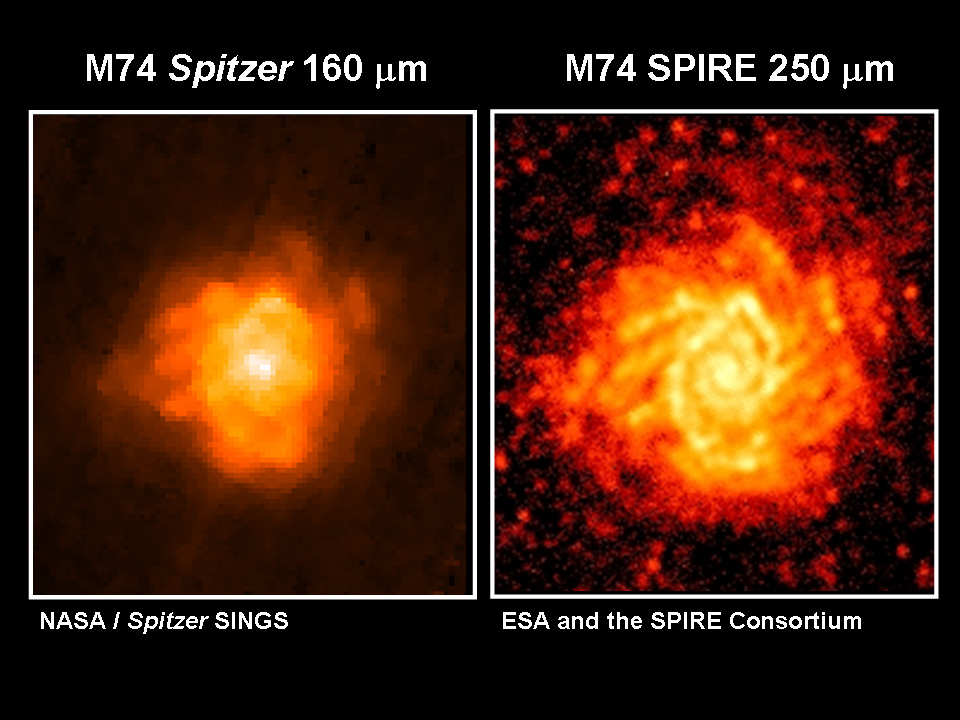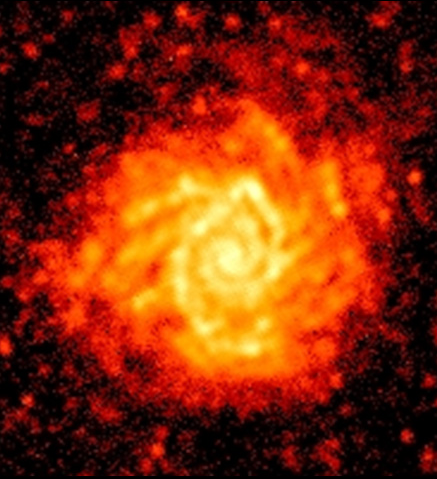| Basic Information | |
| What is this? | A spiral galaxy |
| Where is it in the sky? | In the constellation of Pisces the Fish |
| How big is it? | About the same size as our Milky Way Galaxy |
| How far away is it? | About 30 million light years |
| What do the colours represent? | This is an image taken by a single channel – the SPIRE 250 micron channel |
See this object in:
The spiral galaxy Messier 74 (or M74 for short) has been imaged by the SPIRE on board Herschel. The image above shows the galaxy as seen at SPIRE’s shortest wavelength of 250 microns, while the image below shows a wider view at all three frequencies: 250, 350 and 500 microns.

The spiral arms of this “grand design” spiral are clearly seen, but it is not the stars which Herschel is seeing but the gas and dust which is being warmed up by the stars. The relative brightness of the gas and dust at the three frequencies can be used to calculate its temperature. Brighter, warmer regions identify where clouds of gas and dust are being heated by young stars forming within.
In the background of the image, there are dozens of smaller blobs. One interpretation could be that these blobs are noise in the image – a bit like static when an analogue TV is detuned. However, most of them are visible at all three frequencies and this tells astronomers that these are real objects. They are not foreground stars, however, but much more distant galaxies – too far away for Herschel to see other than as small fuzzy blobs. The relative brightness of each distant galaxy in the three wavelengths of SPIRE provides information on how warm the galaxy is and how distant it is.

The image above is a comparison of the previous best image at far-infrared wavelengths, taken by NASA’s Spitzer satellite. Herschel has a much larger mirror (3.5m compared with 0.7m) and so can see the galaxy in much finer resolution.

